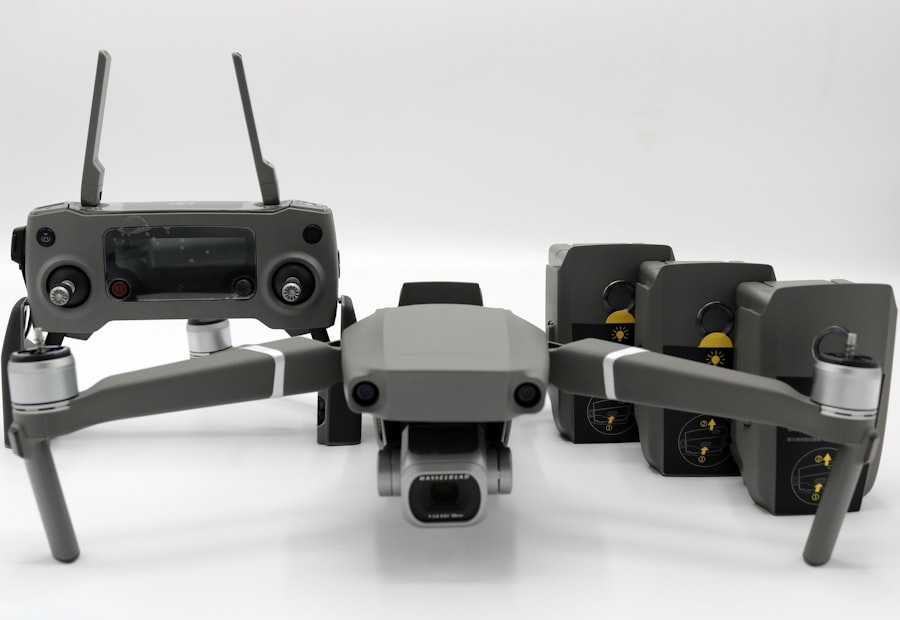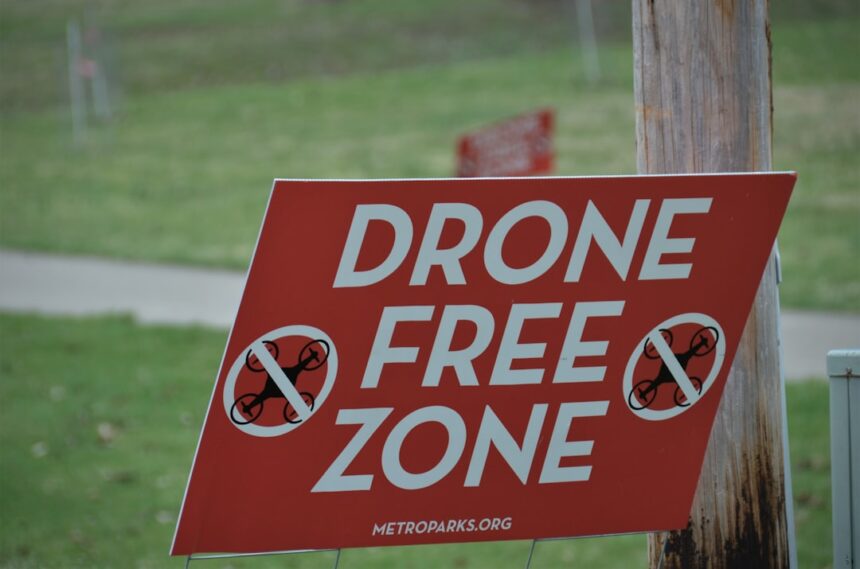In recent years, the proliferation of drone technology has transformed various sectors, from agriculture to entertainment. However, this rapid advancement has also given rise to a new set of challenges, particularly in the realm of security. Drone defense has emerged as a critical area of focus for governments and organizations worldwide, as the potential for malicious drone use poses significant risks.
The need for effective countermeasures against unauthorized or hostile drones has led to the development of sophisticated drone defense systems, which aim to protect sensitive areas and assets from aerial threats. The concept of drone defense encompasses a wide range of technologies and strategies designed to detect, track, and neutralize drones that may pose a danger. These systems can include radar, radio frequency jamming, and even kinetic interceptors.
As the threat landscape evolves, so too does the technology employed in drone defense, necessitating continuous innovation and investment. Understanding the implications of these developments is crucial for assessing their impact on economies, security policies, and societal norms.
Key Takeaways
- Drone defense is becoming increasingly important as the threat of drone attacks rises.
- Developing and implementing drone defense technology comes with a significant cost.
- Maintaining and operating drone defense systems can be a financial burden for businesses and infrastructure.
- Government budgets and spending are impacted by the need for drone defense.
- Training and hiring personnel for drone defense adds to the overall cost.
The Rising Threat of Drone Attacks
The increasing accessibility of drone technology has led to a surge in their use for both benign and nefarious purposes. While many individuals and businesses utilize drones for legitimate activities such as aerial photography or delivery services, the potential for misuse cannot be overlooked. Reports of drone attacks have become more frequent, with instances ranging from terrorist activities to corporate espionage.
This alarming trend has prompted governments and organizations to prioritize the establishment of robust drone defense mechanisms. The motivations behind drone attacks are varied and complex. Terrorist groups may employ drones to carry out targeted strikes, while criminal organizations might use them for smuggling or surveillance.
Additionally, the rise of drone swarms—groups of drones operating in unison—has introduced new challenges for traditional defense systems. As these threats become more sophisticated, the urgency for effective counter-drone measures intensifies, compelling stakeholders to invest in advanced technologies and strategies.
The Economic Impact of Drone Defense

The economic implications of drone defense are multifaceted, affecting various sectors and stakeholders. On one hand, the demand for drone defense systems has spurred growth in the defense industry, leading to job creation and technological advancements. Companies specializing in counter-drone technologies are experiencing increased investment and innovation as they strive to meet the growing needs of governments and private entities.
This burgeoning market not only contributes to economic growth but also fosters competition that can lead to better products and services. Conversely, the financial burden associated with implementing drone defense systems can be significant. Governments must allocate substantial resources to develop and maintain these technologies, which can divert funds from other critical areas such as education or healthcare.
Additionally, businesses that require enhanced security measures may face increased operational costs as they invest in drone defense solutions. The balance between ensuring safety and managing economic resources becomes a delicate dance that policymakers must navigate.
The Cost of Developing and Implementing Drone Defense Technology
| Cost Category | Amount |
|---|---|
| Research and Development | 10 million |
| Prototype Testing | 5 million |
| Manufacturing | 20 million |
| Implementation | 15 million |
| Training and Support | 8 million |
Developing effective drone defense technology is a complex and costly endeavor. Research and development (R&D) efforts require substantial investment in both human capital and technological infrastructure. Companies engaged in this field must continually innovate to stay ahead of emerging threats, which often necessitates collaboration with government agencies and research institutions.
This collaborative approach can lead to breakthroughs in technology but also results in increased costs that must be absorbed by stakeholders. Moreover, the implementation phase presents its own set of challenges. Deploying drone defense systems involves not only the acquisition of hardware but also the integration of software solutions that can effectively manage and respond to potential threats.
Training personnel to operate these systems adds another layer of expense, as does maintaining the technology over time. As a result, organizations must carefully consider their budgets and strategic priorities when investing in drone defense capabilities.
The Financial Burden of Maintaining and Operating Drone Defense Systems
Once drone defense systems are in place, the ongoing costs associated with their maintenance and operation can be substantial. Regular updates and upgrades are necessary to ensure that these systems remain effective against evolving threats. This includes software patches, hardware replacements, and periodic training for personnel who operate the systems.
Failure to maintain these systems adequately can lead to vulnerabilities that adversaries may exploit. Additionally, the operational costs extend beyond mere maintenance; they encompass the resources required for monitoring airspace, conducting threat assessments, and responding to potential incursions. Organizations must allocate personnel and financial resources to ensure that their drone defense capabilities are always ready to respond effectively.
This ongoing financial commitment can strain budgets, particularly for smaller organizations or municipalities with limited resources.
The Economic Toll of Drone Defense on Businesses and Infrastructure

The implementation of drone defense measures can have significant repercussions for businesses and infrastructure. For companies operating in sectors such as logistics or transportation, the need for enhanced security may necessitate changes in operational procedures or additional investments in technology. These adjustments can lead to increased costs that may ultimately be passed on to consumers, affecting pricing structures across various industries.
Furthermore, critical infrastructure such as airports, power plants, and government buildings may require extensive drone defense measures to safeguard against potential threats. The financial burden associated with these enhancements can divert funds from other essential projects or services, potentially leading to delays or cutbacks in infrastructure development. As businesses grapple with these challenges, the broader economic landscape may feel the effects through reduced investment or slower growth rates.
The Impact of Drone Defense on Government Budgets and Spending
Governments worldwide are increasingly recognizing the need for robust drone defense capabilities, leading to significant shifts in budget allocations. National security concerns often take precedence over other spending priorities, resulting in increased funding for defense initiatives aimed at countering aerial threats. This shift can lead to a reallocation of resources away from social programs or public services that may be deemed less critical in light of emerging security challenges.
The financial implications extend beyond immediate budgetary concerns; they also influence long-term planning and policy decisions.
Balancing public expectations with fiscal responsibility becomes a critical challenge for policymakers navigating this evolving landscape.
The Cost of Training and Hiring Personnel for Drone Defense
A crucial aspect of effective drone defense lies in the personnel responsible for operating and managing these systems. Hiring skilled professionals with expertise in technology, security protocols, and threat assessment is essential but comes at a cost. Organizations must invest not only in recruitment but also in ongoing training programs to ensure that personnel remain proficient in operating complex drone defense systems.
Training programs can be resource-intensive, requiring time and financial investment to develop comprehensive curricula that address various aspects of drone defense operations. Additionally, as technology evolves rapidly, continuous education becomes necessary to keep personnel updated on the latest advancements and best practices. This ongoing commitment to training represents a significant financial burden for organizations seeking to maintain effective drone defense capabilities.
The Unforeseen Expenses of Drone Defense
While many costs associated with drone defense are anticipated during budgeting processes, unforeseen expenses can arise unexpectedly. These may include emergency repairs or upgrades necessitated by new threats or vulnerabilities identified after deployment. Additionally, regulatory changes or shifts in public policy can create new compliance requirements that organizations must address promptly.
Moreover, as technology continues to advance at a rapid pace, organizations may find themselves needing to adapt their systems more frequently than initially planned. This adaptability often comes with additional costs that were not accounted for during initial budgeting phases. As a result, organizations must remain agile in their financial planning to accommodate these unforeseen expenses while still ensuring robust drone defense capabilities.
The Global Economic Ramifications of Drone Defense
The implications of drone defense extend beyond national borders; they have global economic ramifications as well. Countries investing heavily in drone defense technologies may find themselves at an advantage in terms of security and stability, potentially attracting foreign investment and fostering international partnerships. Conversely, nations that lag behind in developing effective counter-drone measures may face increased vulnerability to external threats, which could deter investment and hinder economic growth.
Furthermore, as countries engage in an arms race for advanced drone defense capabilities, global markets may experience fluctuations driven by competition among manufacturers and suppliers. This dynamic can lead to shifts in trade patterns as nations seek to acquire cutting-edge technologies from leading developers. The interconnectedness of global economies means that developments in one region can have ripple effects across others, influencing everything from supply chains to labor markets.
The Future of Drone Defense and Its Economic Implications
Looking ahead, the future of drone defense is likely to be shaped by ongoing technological advancements and evolving threat landscapes. As artificial intelligence (AI) and machine learning continue to develop, they will play an increasingly prominent role in enhancing the effectiveness of drone defense systems. These innovations promise improved detection capabilities and faster response times but will also require significant investment in R&D.
However, this competitive landscape may also result in increased pressure on governments to allocate resources effectively while balancing national security needs with other pressing societal concerns. In conclusion, the economic impact of drone defense is complex and multifaceted, encompassing both opportunities for growth and challenges related to resource allocation.
As stakeholders navigate this evolving landscape, understanding the interplay between security needs and economic realities will be essential for fostering a safe and prosperous future.
In recent years, the economic implications of drone defense have become a significant topic of discussion among policymakers and defense analysts. The costs associated with developing, deploying, and maintaining advanced drone defense systems are substantial, impacting national budgets and resource allocation. A related article that delves into the broader context of military expenditures and strategic defense initiatives can be found on the War Room’s website. For more insights, you can read the article by visiting this link. This piece provides a comprehensive overview of how modern defense strategies are evolving in response to emerging aerial threats and the financial considerations that accompany these advancements.
FAQs
What is the economic toll of drone defense?
The economic toll of drone defense refers to the financial impact of implementing measures to protect against unauthorized or hostile drone activity. This can include the costs of technology, personnel, and infrastructure needed to detect, track, and mitigate potential drone threats.
What are some of the economic costs associated with drone defense?
Some of the economic costs associated with drone defense include the procurement and maintenance of detection and countermeasure systems, training and employment of personnel to operate and monitor these systems, as well as the potential impact on businesses and industries affected by drone-related disruptions.
How do drone defense measures impact businesses and industries?
Drone defense measures can impact businesses and industries by causing disruptions to operations, leading to potential financial losses. For example, airports may experience delays and cancellations due to drone sightings, while critical infrastructure facilities may need to invest in additional security measures to protect against potential drone threats.
What are some of the challenges in assessing the economic toll of drone defense?
Some of the challenges in assessing the economic toll of drone defense include the evolving nature of drone technology, the difficulty in quantifying potential losses from drone-related disruptions, and the need to balance security measures with the economic impact on businesses and industries.




